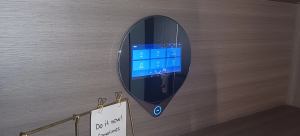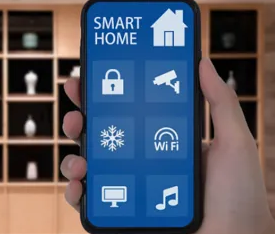When it comes to heating your home, you might have to do a little more than turn on the thermostat. As it gets colder outside, you might have to adjust the thermostat up and down throughout the day. This article will go through how you can use your system’s built-in software or a third-party device to control the temperature of your floor heating system for maximum efficiency in the wintertime!
What is a floor heating system?
A floor heating system is an electric or gas-fired heating system that is used to heat the floor of a room. It is typically used in larger rooms, such as a living room or family room, and is often activated by a thermostat.
How a floor heating system works
A floor heating system consists of a thermostat and controller. The thermostat sets the desired temperature for the room. The controller’s job is to maintain that temperature by turning on and off the heat as needed.
The different types of floor heating systems
There are a few different types of floor heating systems, and each has its own benefits and drawbacks. Here are the main types of floor heating systems:
Conventional electric heating: This is the most common type of floor heating system, and it uses electric heaters to warm the floor. Conventional electric heating is good for small spaces because it’s affordable and easy to operate. However, conventional electric heating isn’t great for large spaces because it can be slow and inefficient.
Gas-fired radiant heating: Gas-fired radiant heating uses hot gas to warm the floor. This type of system is great for large spaces because it’s fast and efficient. However, gas-fired radiant heating is more expensive than conventional electric heating, so it’s not ideal for smaller spaces.
Oil-fired radiant heating: Oil-fired radiant heating uses hot oil to warm the floor. This type of system is good for small spaces because it’s affordable and quick. However, oil-fired radiant heating isn’t great for large spaces because it can be noisy and smoky.
How to control a floor heating system
There are a few different ways to control a floor heating system. One way is to use a thermostat to set the temperature that the heating unit will operate at. Thermostats are usually located in the room where the heating unit is located, or near a door that leads into the room. You can also use an override switch to turn off the heating unit when the room gets too cold or too hot. Override switches are usually located in the hallway outside of the room where the heating unit is located.
FAQ About youtube mp3 online comconver
How do I implement floor heating system control in my design?
Floor heating system control is an awesome tool for designers. The design process is generally composed of sketches, wireframes, and presentation to get a client excited about the idea of your concept. The Floor Heating System Control allows you to easily connect to the floor heating system in your home, office, or business, so that you can simulate building codes and functionality that would be used by customers.
Will a floor heating system be able to heat my entire apartment?
It depends on how large your apartment is and what kind of floor heating system you have. In general, most floor heating systems these days are able to heat a relatively small space or a single room. You should check with the manufacturer of the heating system to find out how much it can heat.
How do I control my floor heating system using my thermostat?
To change the temperature of your floors using your thermostat, you need to use manual mode. Set the desired temperature for both heating and cooling, then select the “floor” option in the settings menu.
How do I control my floor heating system with a thermostat or smartphone app
Our floor heating system control products connect wirelessly with the smartphone app. The thermostat measures the temperature inside of a room and sends out a signal to activate or to deactivate the heating element in each device that’s installed.
What does this article mean by controlling my floor heating system?
This article is about controlling your heating system by temperature and humidity. There are many ways to control your floor heating system – this article focuses on the cheapest and most convenient one.
How do you control the temperature of your heating system without having to use a thermostat?
The floor heating system control uses two different approaches to controlling the temperature of its heating. The first one is outside and directly affects the UVB light rays, which are then transferred by the two fiber optics to the controller. These fiber optics are derived from a glass fiber that is waterproof to meet any harsh environmental conditions. The second approach is the controller itself, where heat is generated from a thermal engine with an electric generator as its source, so you can always be sure that the controller’s temperature will always be within safe limits.
What are some of the advanced features of a floor heating system?
Hardwired floor heating systems typically don’t need as much maintenance as they do to a wireless heating system, but they also have some other drawbacks. One disadvantage is that a hardwired floor heating system tends to be more expensive, because any type of wiring installation will take quite a bit of time and cost quite a bit to install. Another disadvantage is that if your furnace goes out during the wintertime, you will have no way of controlling your floor heater. However, once you make the investment into a hardwired floor heating system, you are done with changing tubing and fiddle with wires for good.
What is the difference between a heating system and heating control?
If they are not controlled, heating systems offer no protection against foreign objects and dust. They also have very little in terms of energy efficiency and require pre-programmed settings. If a heating system is controlled, then it allows the user to customize their operation according to their needs as well as giving them more energy efficiency.
How Floor heating system control Works
1. Choose the right heating system: There are a few different types of heating systems you can use in your home.
2. Connect your heating system: If you have a central heating system, you’ll need to connect the wires from your system to the wall. If you have an automatic or digital heating system, you’ll need to connect the wires to the device.
3. Control your heating system: Once you have connected your heating system, use the control panel or app on your system to change the temperature settings.
Pros of Floor heating system control
• The system is very easy to use and understand.
• It has a user-friendly interface that is perfect for anyone, regardless of experience or technical knowledge.
• The system is reliable and efficient, making it a great choice for anyone looking for an affordable and effective floor heating solution.
• The system can be customized to fit your specific needs and preferences, giving you the flexibility and control you need to create the perfect floor heating experience for your home or office.
• The system is available in a variety of colors and styles, making it easy to match your existing decorating scheme.



